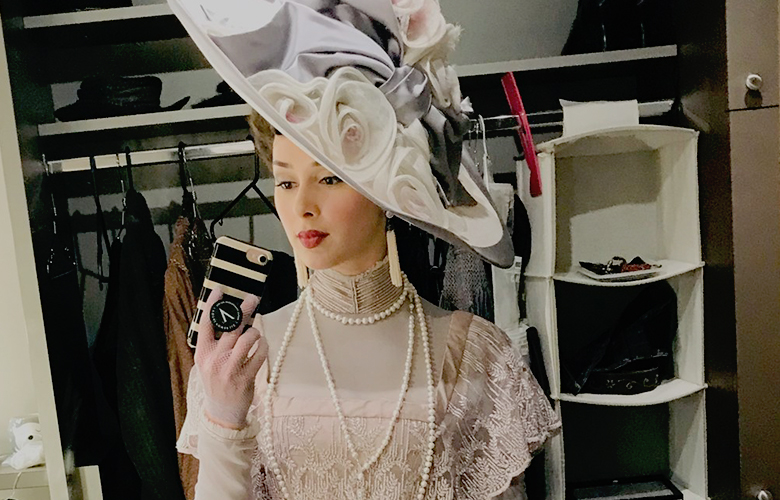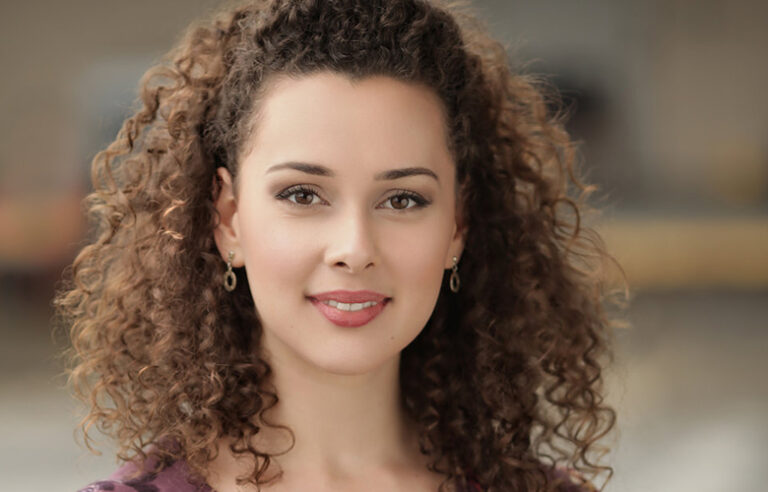
In my home, My Fair Lady was the movie-night staple. Every time I popped my VHS into the TV, I felt instantly transported to early 20th century London. The soaring orchestrations of Lerner and Loewe burst through my bedroom and it was transformed into a glorious study. I twirled endlessly to “I Could Have Danced All Night,” my tight curls flying across my face in a frizzy mess. My mother can confirm, I danced all night, even after several attempts to “GO. TO. BED!” Sorry, Mom.
I was twelve years old, and even though I knew every line and every song by heart – I anxiously sat on the edge of my seat as Eliza confronted each challenge with striking determination, courage, and wit, plowing gracefully through them one by one. It was a masterpiece.
Memorize a 42-verse surah from the Quran in Arabic? Even the most difficult challenges felt conquerable. It was safe to say those few – okay, numerous – movie-nights spent in Covent Garden had a major impact on me.
Fast forward a couple of years and, much to my parents’ distress, I was on my way to the big city to follow my dreams of performing on the Great White Way. Well, let’s just say it wasn’t exactly a cake-walk.
After waiting countless hours in cattle-calls to sing eight bars, being told politely that “perhaps Advanced Ballet isn’t the appropriate level for you” in dance class (I should have taken the hint when the pointe shoes broke out: I was wearing gym socks), and being stereotyped out of most, if not all, open calls I attended, I needed to be reminded of my ‘why.’ So when a friend suggested to me to attend the My Fair Lady open call, I went on the whim of frustration. I expected nothing but the rare opportunity to sing. For me. It was for Broadway after all. There was no way in hell I was booking that.
Then there was a callback. “Cool! More practice!” I thought.
Then another.
Next thing I know, I’m sobbing on the floor with my best friend whose couch I was sleeping on for a couple of weeks by that point. I was going to be an ensemble member of the Lincoln Center Theater revival of My Fair Lady. It was truly a dream come true.
When the opportunity came for me to understudy the leading role, it was brought to my attention that in the show’s entire Broadway and West End history, Eliza Doolittle had never been portrayed by a person of color. Ever. My Fair Lady premiered over 60 years ago, while Pygmalion, the play the musical is based upon, premiered over 100 years ago. So I wondered, “Where do I fit?” This prompted a journey for me I never anticipated.
Growing up Muslim and Egyptian in a post-9/11 world was, for lack of a better term, hard. Sure, there were a couple of protesters outside the Mosque nearly every Sunday, and sometimes I’d be referred to as the ‘terrorist’ in school, but eventually discrimination became the norm. Once my family was refused service at a local restaurant for being one of ‘them.’ This refusal was on an Islamic holiday, Eid-al-Fitr, the last day of Ramadan. Fear-mongering was rampant in a post-9/11 United States, and blatant, entitled discrimination was not far behind. I was a part of a community that was outcast and encountered systemic discrimination on a daily basis.

My Fair Lady became my outlet as a child. I found solace in Eliza. She confronted discrimination I also faced – and broke free despite her status as a working-class woman in Edwardian England. It is through Eliza’s determination for a better life that she challenges the restraints society placed on her. Through the medium of speech, she is able to climb up the ranks of class.
It is simply not enough to examine class without also understanding the intersection of race and gender and how these three pillars of discrimination can alter the human experience. If Eliza were a person of color, would her experience be different? Possibly.
Lincoln Center Theater’s production of My Fair Lady is more diverse than any other production of the musical seen in Broadway and West End history. It is breaking ground in diversity, inclusiveness and equal opportunity by opening a once sealed door. After more than 60 years since the original show’s premiere, they are sending an important message to those whose hope for their own future in the theatre could be impacted by the fact that this barrier has finally been broken. That makes LCT a true pioneer in changing the realm of American Theatre, and I couldn’t feel more humbled and grateful for the opportunity to perform in my dream show, in my dream role. A role that I felt was never an option for me before this production.
I may not fit the historical ‘mould,’ but Eliza is a heroine for the 21st century. Her story still rings honest and true today, challenging the social institutions that perpetuate discrimination. That is what makes her story so timeless.
So consider this a love-letter to My Fair Lady. Or perhaps a “thank you” to Lincoln Center Theater for finally opening the door. Either way, the once impossible challenge feels entirely possible. If only twelve-year-old Shereen could see her now. She would never go to bed.
Sarah Quinn Taylor: Broadway Debut In My Fair Lady
On Broadway: Best Spots for Pre-Show Drinks in NYC
Published in collaboration with The Ensemblist
Listen to the Ensemblist Podcast
The Ensemblist: Instagram, Facebook, Twitter


THE ENSEMBLIST IS AN ONLINE ADVOCATE FOR THE TALENTED ARTISTS WHO WORK IN BROADWAY ENSEMBLES. What started as an audio podcast for those curious about how Broadway really works turned into an avenue for young and aspiring professional artists to learn more about theatre from in the inside out. In addition to more than 150 podcast episodes, available on Apple podcasts, Stitcher, TuneIn and Podbean, The Ensemblist’s blog features daily posts from artists about their work and lives. The Ensemblist is also active on both Instagram and Twitter, with more than 10,000 followers on each platform. Through our posts, podcasts and features, we are changing the conversation about what it means to be a successful theatre artist.
Read Full Profile© 2021 TheatreArtLife. All rights reserved.

Thank you so much for reading, but you have now reached your free article limit for this month.
Our contributors are currently writing more articles for you to enjoy.
To keep reading, all you have to do is become a subscriber and then you can read unlimited articles anytime.
Your investment will help us continue to ignite connections across the globe in live entertainment and build this community for industry professionals.